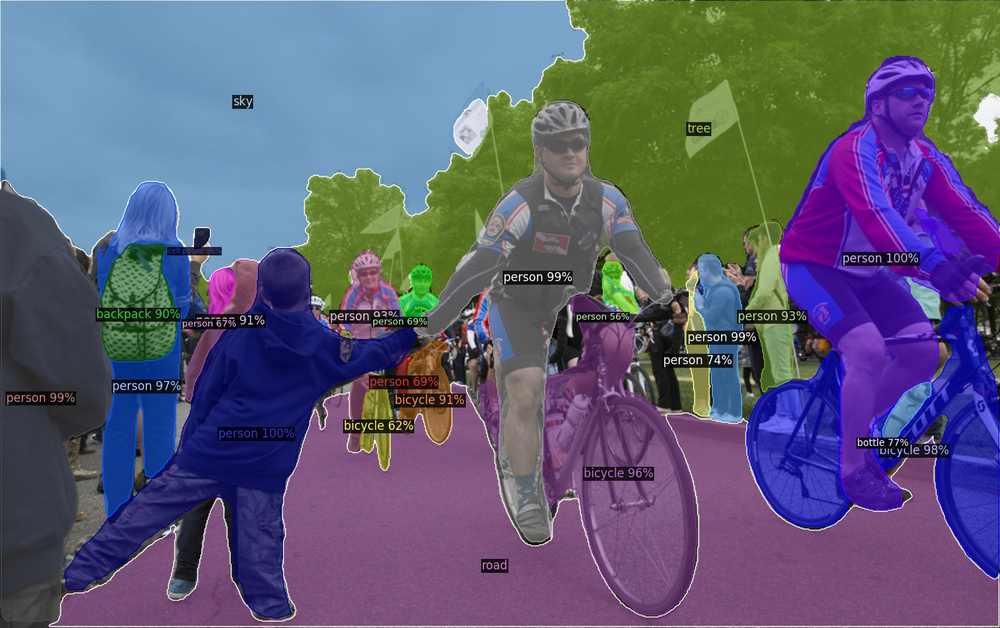aadi
It is difficult to determine the scale and aspect ratio of anchors for anchor-based object detection methods. Current state-of-the-art object detectors either determine anchor parameters according to objects' shape and scale in a dataset, or avoid this problem by utilizing anchor-free method. In this paper, we propose a gradient-free anchor augmentation method named AADI, which means Augmenting Anchors by the Detector Itself. AADI is not an anchor-free method, but it converts the scale and aspect ratio of anchors from a continuous space to a discrete space, which greatly alleviates the problem of anchors' designation. Furthermore, AADI does not add any parameters or hyper-parameters, which is beneficial for future research and downstream tasks. Extensive experiments on COCO dataset show that AADI has obvious advantages for both two-stage and single-stage methods, specifically, AADI achieves at least 2.1 AP improvements on Faster R-CNN and 1.6 AP improvements on RetinaNet, using ResNet-50 model. We hope that this simple and cost-efficient method can be widely used in object detection.
- For RPN
-
Baseline
Num anchors AR100 AR1000 ARs ARm ARl 1 45.5 55.6 31.4 52.8 60.0 3 45.7 58.0 31.4 52.7 61.1 -
Ablation Study
dilation Anchor Guided AR100 AR1000 ARs ARm ARl 1 52.8 60.6 40.2 60.8 63.6 2 54.8 64.7 39.0 63.1 70.6 2 √ 56.3 66.7 39.5 64.9 73.4 3 53.7 64.0 35.4 62.1 73.9 3 √ 55.6 67.6 36.1 64.3 77.6 4 52.2 60.5 30.9 61.3 76.6 4 √ 54.4 65.5 33.0 63.7 78.9
-
- For RetinaNet
-
Ablation Study
AADI dilation AP AP50 AP75 APs APm APl 1 38.2 58.4 41.1 24.3 42.2 48.5 √ 1 37.3 56.4 40.2 22.0 39.9 46.8 √ 2 39.8 57.5 43.5 22.1 43.5 50.6 √ 3 38.3 54.6 41.7 20.0 43.1 51.1 -
With IoU
AP AP50 AP75 APs APm APl 40.2 57.7 43.8 24.1 43.1 52.2 -
With 3x schedule (RetinaNet with giou, AADI with smooth l1)
Model AP AP50 AP75 APs APm APl RetinaNet 39.6 59.3 42.2 24.9 43.3 50.7 AADI-RetinaNet 41.4 59.3 45.2 24.8 44.9 54.0
-
- For Faster R-CNN
-
Ablation Study
AADI dilation AP AP50 AP75 APs APm APl FPS 1(3 anchors) 37.9 58.8 41.1 22.4 41.1 49.1 26.3 √ 2 40.3 59.3 44.3 24.2 43.3 52.2 22.4 √ 3 40.8 59.5 45.0 24.0 44.6 53.1 22.4 √ 4 40.5 58.7 44.6 23.2 44.8 52.7 22.3 -
3x schedule
Backbone AP AP50 AP75 APs APm APl FPS R-50 FPN 42.5 61.2 46.5 25.3 46.2 55.5 22.6 DCN-50 FPN 44.1 63.1 48.2 28.3 46.9 58.4 20.1 R-101 FPN 44.5 63.2 48.7 26.9 48.3 57.4 17.4
-
- Detectron2
Detectron2 is Facebook AI Research's next generation library that provides state-of-the-art detection and segmentation algorithms. It is the successor of Detectron and maskrcnn-benchmark. It supports a number of computer vision research projects and production applications in Facebook.
Installation
See installation instructions.
Getting Started
See Getting Started with Detectron2, and the Colab Notebook to learn about basic usage.
Learn more at our documentation.
Citing Detectron2
@misc{wu2019detectron2,
author = {Yuxin Wu and Alexander Kirillov and Francisco Massa and
Wan-Yen Lo and Ross Girshick},
title = {Detectron2},
howpublished = {\url{https://github.com/facebookresearch/detectron2}},
year = {2019}
}
@misc{wan2021augmenting,
title={Augmenting Anchors by the Detector Itself},
author={Xiaopei Wan and Shengjie Chen and Yujiu Yang and Zhenhua Guo and Fangbo Tao},
year={2021},
eprint={2105.14086},
archivePrefix={arXiv},
primaryClass={cs.CV}
}








